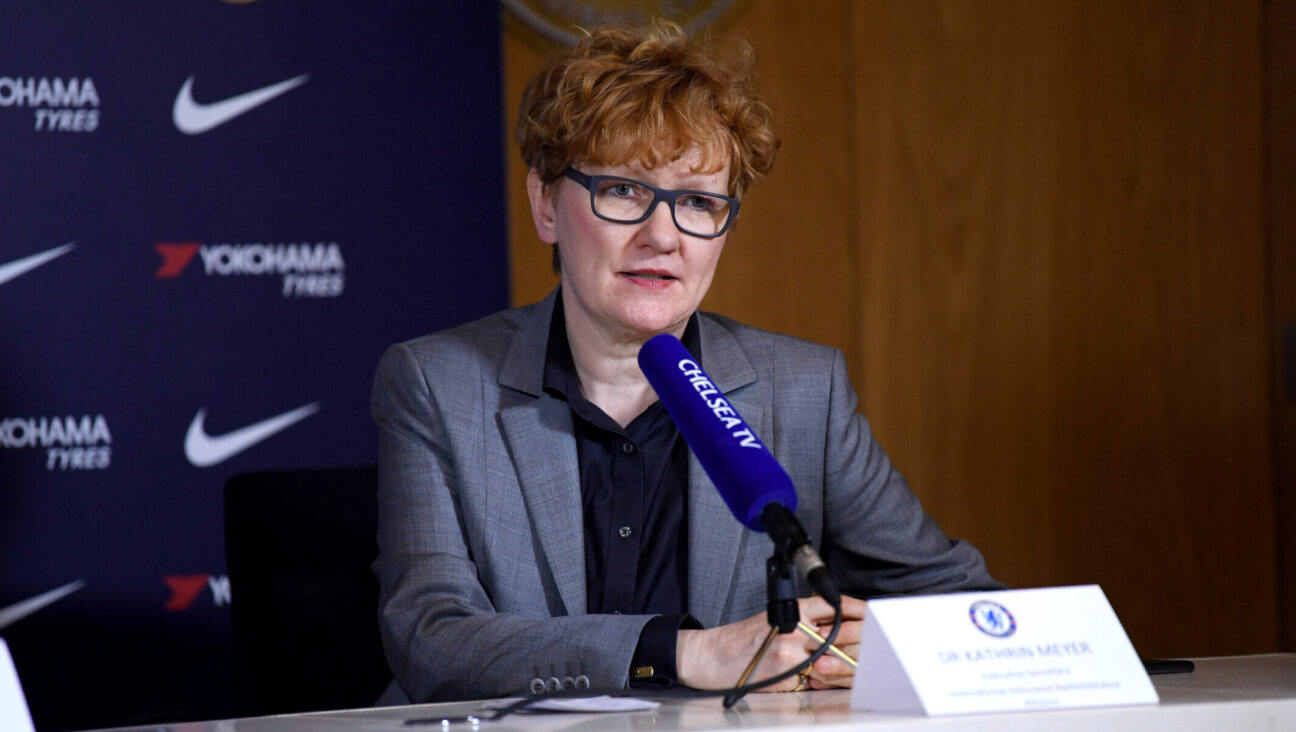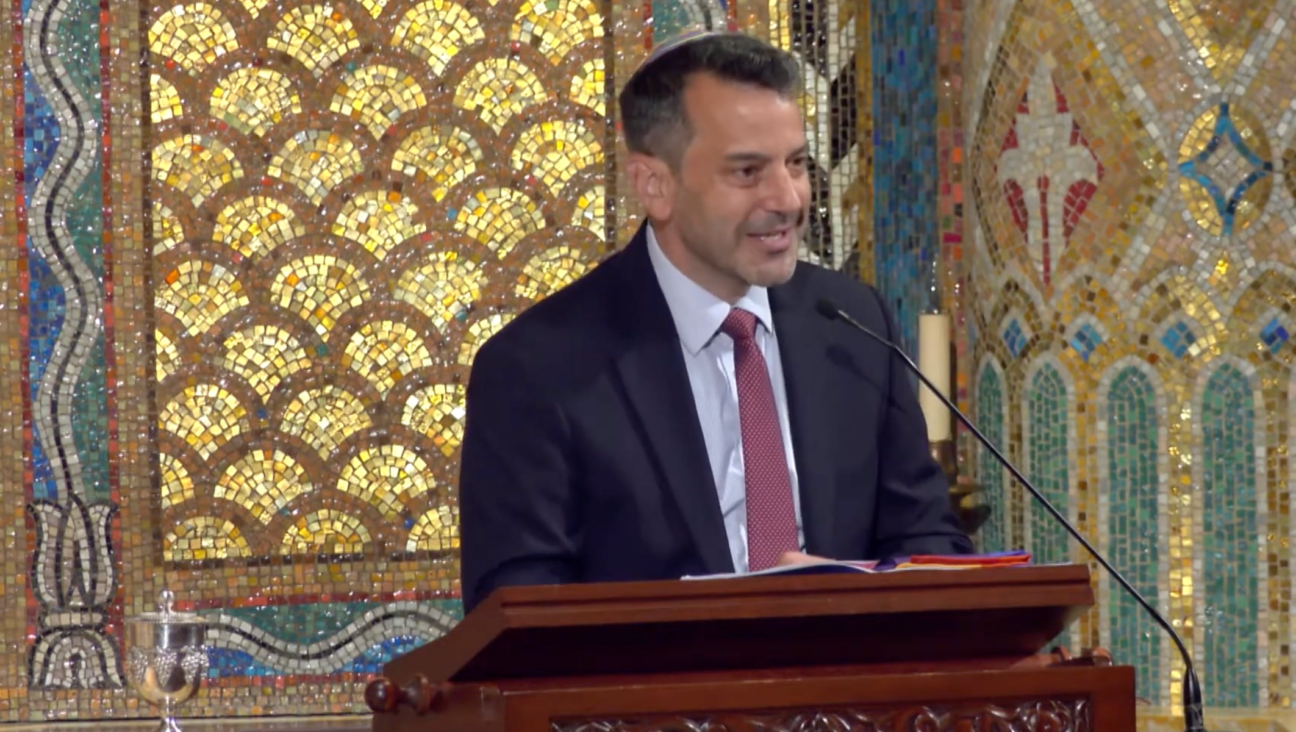Step One Toward an ML4 Cure: Infect a Mouse
To the untrained eye, the basement-level laboratory at the National Institutes of Mental Health, in Bethesda, Md., looks like a scene out of NASA. Scientists sport full-body plastic suits, hair nets and blue booties — all in an effort to keep the outside world’s contaminations at bay.
The lab’s sterility is interrupted only by Dr. James Pickel’s gregariousness. Pickel is the director of the Transgenic Core at NIMH, home to thousands of experimental mice. He is so enthusiastic, so good-humored, it’s sometimes difficult to tell that he is working on gravely serious illnesses.
Pickel spends 80% of his time doing research decided by the higher-ups at the National Institutes of Health, he said. Right now that means using bone-marrow cells to help heart attack patients redevelop heart muscle. The remaining 20% he can devote to projects of his own choosing. With this time Pickel tends to investigate rare diseases that typically receive limited funds for research, and at the forefront of his lab’s work today is creating a mouse model for mucolipidosis type IV (ML4), a disease characterized by the deficiency of a protein that plays a crucial role in psychomotor development. One in 100 Ashkenazic Jews is a carrier.
Pickel and the others in his lab work on the basic science of creating a genetic model. His task is to produce symptomatic mice. It will fall to others to develop a treatment. The process begins when Pickel’s team extracts embryonic stem cells — those that are still undifferentiated and can become any type of tissue — from a mouse uterus and allows them to multiply in petri dishes. The stem cells are coded with a protein that will look green under blue light, making them easier to track.
It is in these embryonic stem cells that the process of creating the transgene occurs. This has been Pickel’s major achievement with ML4; he has successfully cut and pasted to create recombined DNA that carries the ML4 gene.
The recombined stem cells are then injected into a mouse embryo (harvested from a donor female), giving them an environment in which they will ultimately multiply and specialize into tissues. The embryo containing the recombined DNA is called a chimera. Females are mated with vasectomized males. After copulation, female rodents, even if they do not become pregnant, behave as if they were; such females are called pseudopregnant. The chimeric cells are injected into the pseudopregnant female, who will act as a surrogate mother. This allows Pickel to eliminate interference from the male’s or surrogate mother’s genetic makeup, ensuring that the mice are chimeras, formed from the embryonic stem cells and host embryo.
The genome of the engineered mice can be seen when their tails are snipped off and put in vials to dissolve. From the dissolved tail the scientists can check for the presence of the ML4 gene.
Pickel looks at the mice using goggles that shine a blue light on them, and fluorescent green coloration appears in their ears, feet and tails (or everywhere in an albino mouse). This marker color shows that the targeted stem cells have incorporated themselves into the mouse’s body. The successful offspring — green on the inside, brown on the outside — are chimeras, and will be mated to produce a fleet of mice with the appropriate genetics for study, called “knockout” mice since the original gene is entirely absent.
Pickel took apparent pleasure in showing his lab to a recent visitor. In layman’s terms, he explained the function of each piece of equipment. Cell injectors, he said, cost about “a car apiece.” Of another gadget he said, “it used to look like scientific equipment; now it looks like something in your kitchen.”
In a way, Pickel’s mouse-making role resembles a step along an assembly line, but there is nothing impersonal about it. Some of the mice bred in the lab have gotten names over the years. And in the back of Pickel’s mind is the notion that the work he does could one day help someone.
“It gives me a good feeling,” he said, “that somebody is going to benefit from all this.”
A message from our Publisher & CEO Rachel Fishman Feddersen

I hope you appreciated this article. Before you go, I’d like to ask you to please support the Forward’s award-winning, nonprofit journalism so that we can be prepared for whatever news 2025 brings.
At a time when other newsrooms are closing or cutting back, the Forward has removed its paywall and invested additional resources to report on the ground from Israel and around the U.S. on the impact of the war, rising antisemitism and polarized discourse.
Readers like you make it all possible. Support our work by becoming a Forward Member and connect with our journalism and your community.
— Rachel Fishman Feddersen, Publisher and CEO






















